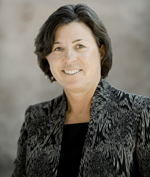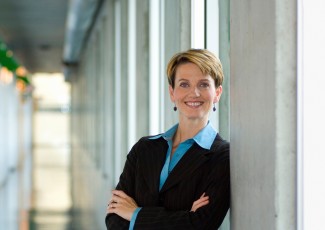Q&A: Departing President Reflects on Leadership Role
By Emily Rogan
March 5, 2015
Under Karen Stout, Montgomery County Community College boosted enrollment, built productive partnerships and expanded its campus.
 Karen Stout, president of Blue Bell, Pennsylvania’s, Montgomery County Community College for almost 15 years, recently announced that she would be leaving to become president and CEO of Achieving the Dream, the national reform organization that uses evidence-based data to help improve completion and outcomes for millions of community college students.
Karen Stout, president of Blue Bell, Pennsylvania’s, Montgomery County Community College for almost 15 years, recently announced that she would be leaving to become president and CEO of Achieving the Dream, the national reform organization that uses evidence-based data to help improve completion and outcomes for millions of community college students.
President Stout shares some thoughts as she prepares for her transition.
How are you feeling right now?
It’s definitely bittersweet and very emotional. I love being on a community college campus and have been on one since 1984, in some role. My biggest fear is not the new work, even though it is a big role to jump into. It is: How will I feel that first day when I’m not on a campus? I have a great relationship with the trustees and the community.
As a long-term president, you become the face of the institution, and you never know when it’s the right time to leave. But, for me, the timing is absolutely right, because the college is in great shape, and we’re about to start several new cycles of planning, including a master plan, a facilities plan and a plan around student success and completion. Now is a good time to hand it off to a new leader with a new set of eyes.
What are your proudest moments?
A lot of people drive by our two campuses, with their improved facilities (the college added a culinary institute), and they think that’s what I’m most proud of. But I’m really most proud of moving the college to a community center. We were a hidden, sleeping giant; we have built relationships with the school districts, the community and business leaders — they all know about the college. The building of relationships is fundamentally the most important thing. It’s not tangible, but it’s there.
I’m also proud of what we’ve done with our minority-male mentoring program. We took it on in a public and sometimes uncomfortable way, from enrollment to retention and completion, to address the educational attainment gap. Now enrollment of African-American males is way up; they come from all over because they know there’s support here.
When did you feel the most challenged?
The low moments were really around public funding in the last couple of years. Some significant changes at the local level have required us to keep all the momentum around student success and new programs, with restricted dollars. We had to have the resiliency to do that. It happened 10 years into my tenure, and it was a surprise and a challenge. But we’ve adapted and shifted; we set a goal to raise $9 million for student scholarships and will be close to $11 million by the end of June.
What’s your opinion on the state of community colleges today?
Our roles have never been more important, and now everybody knows it. Families are talking and thinking about community college, no matter how academically prepared or socio-economically challenged — it’s become the center of kitchen-table conversation.
With the focus on completion, presidents need to make tough decisions about changing structures and systems that have been in place for 50 years, and that’s hard work.
Community colleges are going through a renaissance; we will look a lot different in 20 years. I just can’t describe it at this point.
If you could wave a magic wand right now, what would you do?
I would want, somehow, for all 1,200 community colleges across the country to have a common framework that will help guide their transformation into the next generation. To truly be able to balance access, equity and success in a way that shows results that the public can understand. At that magic moment when the public fully understands, then the investment will come; donors and taxpayers will reinvest.













